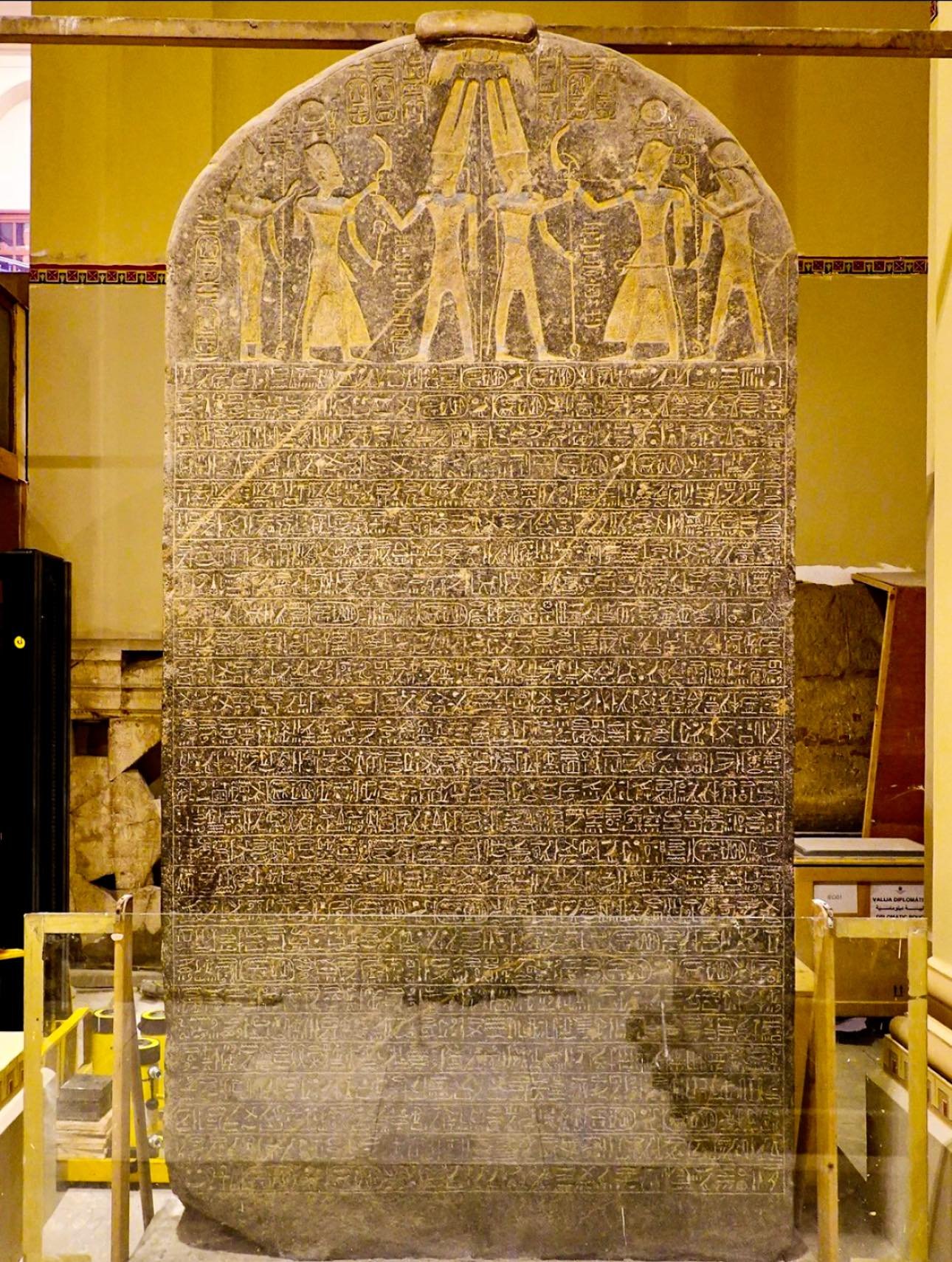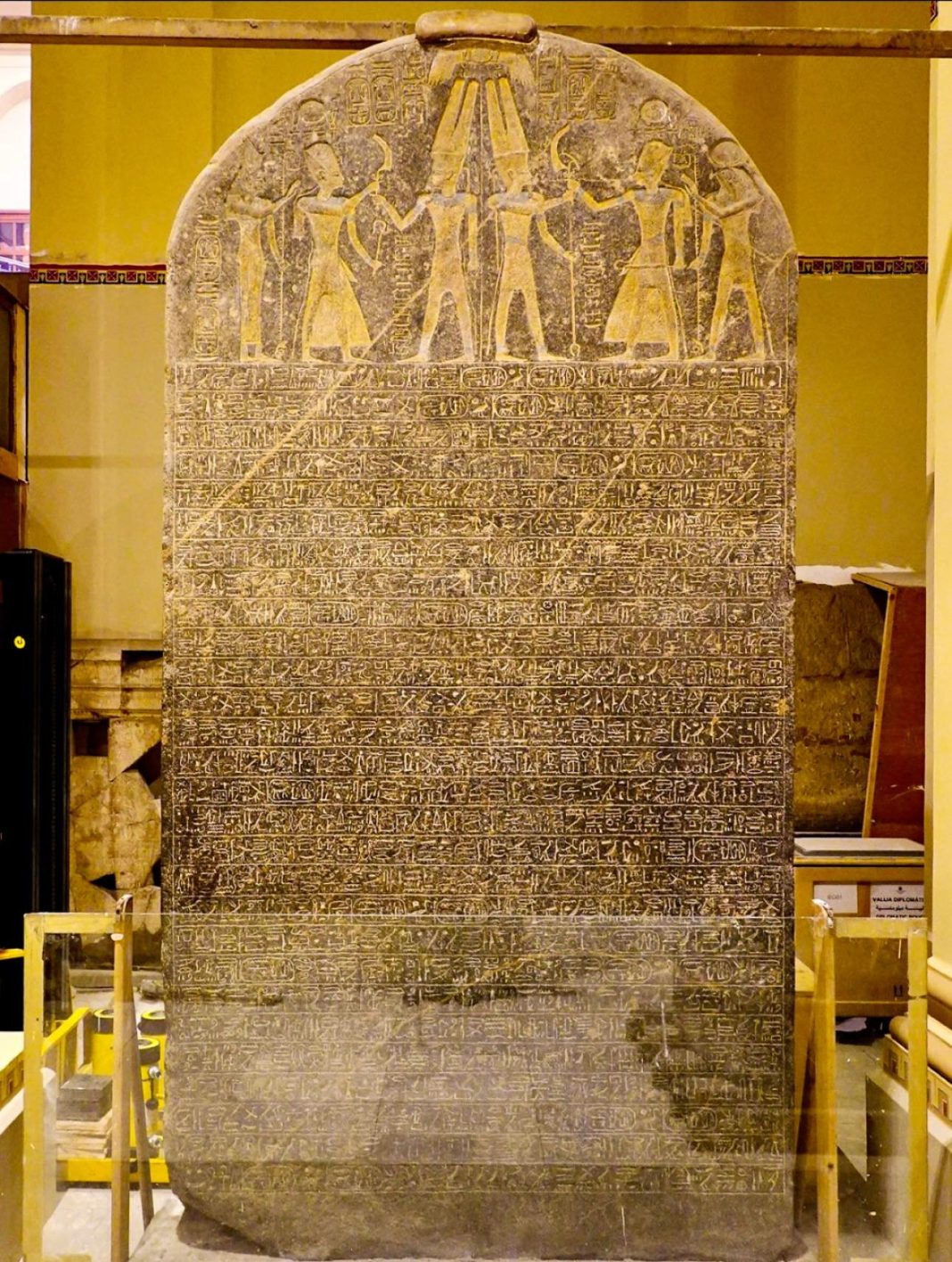The Merneptah Stele, often called the Israel Stele, is one of the most significant archaeological discoveries in the study of ancient history. This ancient Egyptian artifact, dating back to the reign of Pharaoh Merneptah (1213–1203 BC), holds the earliest known extra-biblical reference to “Israel.” Its significance extends beyond a mere mention, offering invaluable insights into the geopolitical landscape of the ancient Near East.

### **What is the Merneptah Stele?**
The Merneptah Stele is a large, black granite slab inscribed with hieroglyphs commemorating the military achievements of Pharaoh Merneptah. Discovered in 1896 by the renowned archaeologist Flinders Petrie in Thebes, Egypt, the stele details the Pharaoh’s conquests and victories over various groups in Canaan and surrounding regions.
At nearly 10 feet tall, the stele was originally intended to glorify the Pharaoh’s power and cement his legacy. However, it has since gained prominence for its reference to Israel, making it a cornerstone in biblical archaeology and Near Eastern studies.
### **The Historical Significance of the Israel Mention**
The most famous line from the stele reads:
_”Israel is laid waste, its seed is no more.”_
This line marks the earliest known mention of Israel in any historical document outside the Bible. Its inclusion suggests that by the late 13th century BC, “Israel” was recognized as a distinct group or entity in Canaan. Unlike other groups mentioned, Israel is referred to with a determinative indicating a people rather than a city-state, implying it was a societal or tribal collective rather than a settled urban center.
### **A Window Into Ancient Geopolitics**
The Merneptah Stele provides crucial information about the dynamics of power in the ancient Near East. At the time, Egypt was a dominant force, and Merneptah’s campaigns aimed to suppress rebellions and assert control over Canaan. The stele lists several defeated peoples and cities, including Gezer, Ashkelon, and Israel.
This context helps historians and archaeologists piece together the complex relationships between Egypt, its vassal states, and emerging groups like Israel. The stele supports the notion that Israel was already a recognizable entity, engaging in conflicts with larger powers during this period.
### **Significance for Biblical Studies**
For biblical scholars, the Merneptah Stele is a critical piece of evidence. It corroborates the existence of an entity called “Israel” in Canaan during the time the biblical narrative places the Israelites there. This external confirmation helps bridge the gap between the biblical account and historical records, providing a firmer foundation for understanding the early history of Israel.
### **Preservation and Display**
Today, the Merneptah Stele is housed in the Egyptian Museum in Cairo, where it remains a highlight for visitors and researchers alike. Its preservation allows ongoing study, offering new insights as archaeological methods and interpretations evolve.
The Merneptah Stele is more than an ancient artifact; it is a vital link to understanding the early history of Israel and its interactions with neighboring powers. Its significance as the earliest extra-biblical reference to Israel makes it a cornerstone of historical and biblical scholarship. For anyone interested in the ancient world, the Merneptah Stele is an enduring symbol of the rich and complex history of the Near East.
Whether you’re a history enthusiast, a biblical scholar, or simply curious about the past, the Merneptah Stele offers a fascinating glimpse into the world of over 3,000 years ago.

















